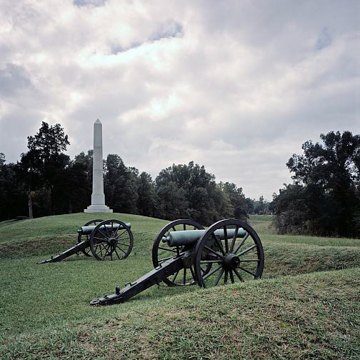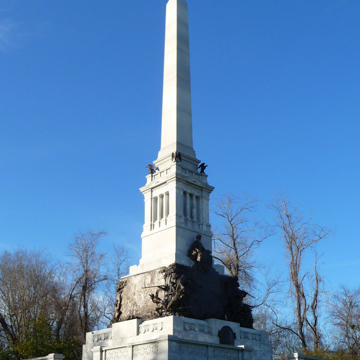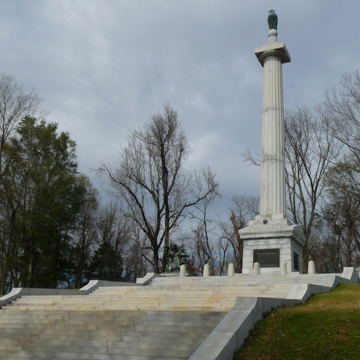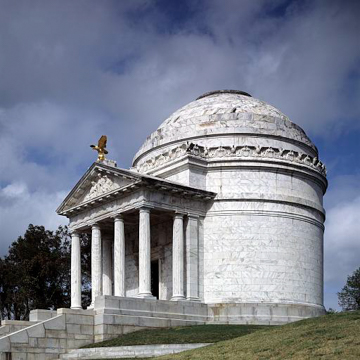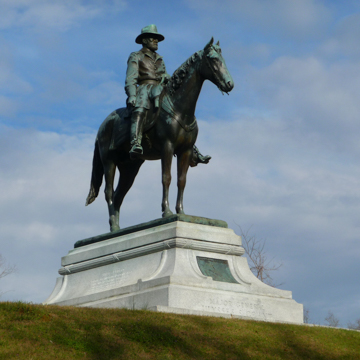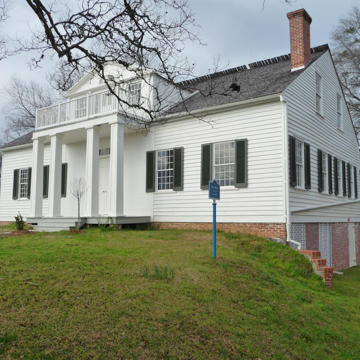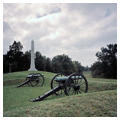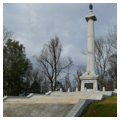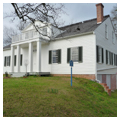From May 18 to June 4, 1863, Union troops under the command of General Ulysses S. Grant laid siege to Vicksburg, and both the Confederate and Union armies dug long, elaborate trenches and other fortifications in the powdery loess soil. The Vicksburg National Military Park, with its dramatic rolling topography occupying the arc of both armies' fortifications, celebrates and interprets both the siege and defense of this strategic place. The park is a palimpsest: the prewar terrain of ridges and bottoms, the ground reshaped by Confederate and Union troops, and the postwar designed landscape overlaid with purposeful monumentation.
Beginning at the Memorial Gateway (1920, Charles L. Lawhon) that originally straddled Clay Street, a winding paved drive leads through wooded thickets and connects more than fourteen hundred monuments, markers, and iron tablets, including eighteen pieces of statuary, most installed before 1917. The park contains by far Mississippi's most significant concentration of outdoor art and is its most complete and significant planned landscape. Battlefield parks already existed at Chickamauga-Chattanooga (1890), Antietam (1890), Shiloh (1894), and Gettysburg (1895) when Vicksburg was dedicated in 1896. Stephen D. Lee, who fought here in the Confederate army and later became the first president of Mississippi State University, served as chairman of the Vicksburg National Military Park Association, which determined the boundaries of the almost two-thousand-acre park, laid out the dual access roads along Northern and Southern lines, and located the many markers that identify the positions of the various military units that fought here.
Fourteen state governments built their own monuments on approved locations. The most elaborate are those for Mississippi, Iowa, Wisconsin, and Illinois. In 1909, the State of Mississippi held a design competition for its state monument won by designer and sculptor Frederick Triebel. His granite monument rises in stages from a stylobate to a temple to an obelisk, topping out at seventy-six feet. Bronze relief panels on all four sides of the base depict Mississippi soldiers and artillery pieces at Vicksburg, while Clio, the muse of history, records an honor roll of the state's dead. The Iowa monument (1906) is an exedra with Greek Doric columns designed by Henry H. Kitson, with the assistance of Boston architect and landscape architect Guy Lowell. Kitson's wife, Theo Alice Ruggles Kitson, executed the equestrian statue at the front. The Wisconsin monument (1909) is a sixty-foot-tall Greek Doric column on a temple-sepulchre base with bronze bas-relief panels and a crowning eagle. It was the work of New York City architect W. Liance Cottrell, who designed the Pennsylvania monument at Gettysburg, and sculptor Julius Loester. Largest of all is the Illinois monument erected in 1904–1906. Based on the Pantheon in Rome, the granite and marble domed rotunda lined with bronze tablets listing every Illinois soldier at Vicksburg was designed by the Chicago architectural firm of Jenney, Mundie, and Jensen, led by William LeBaron Jenney, who served in the Vicksburg campaign as William Tecumseh Sherman's chief engineer. Chicago sculptor Charles J. Mulligan executed the monument's tympanum sculpture, where another figure representing history records heroic deeds.
The equestrian statue of Ulysses S. Grant (1918) was the work of Chicago sculptor Frederick C. Hibbard. Theo Alice Ruggles Kitson produced those of Stephen D. Lee (1909) and Jefferson Davis (1926). The statue of John C. Pemberton (1917), the Confederate commander at Vicksburg, was executed by sculptor and painter Edmond T. Quinn. One building from the time of the battle remains, the one-and-a-half-story frame Shirley House, built on a center-hall plan and entered through a square-columned portico below an oversized dormer. The park is administered by the National Park Service and is open to the public.

